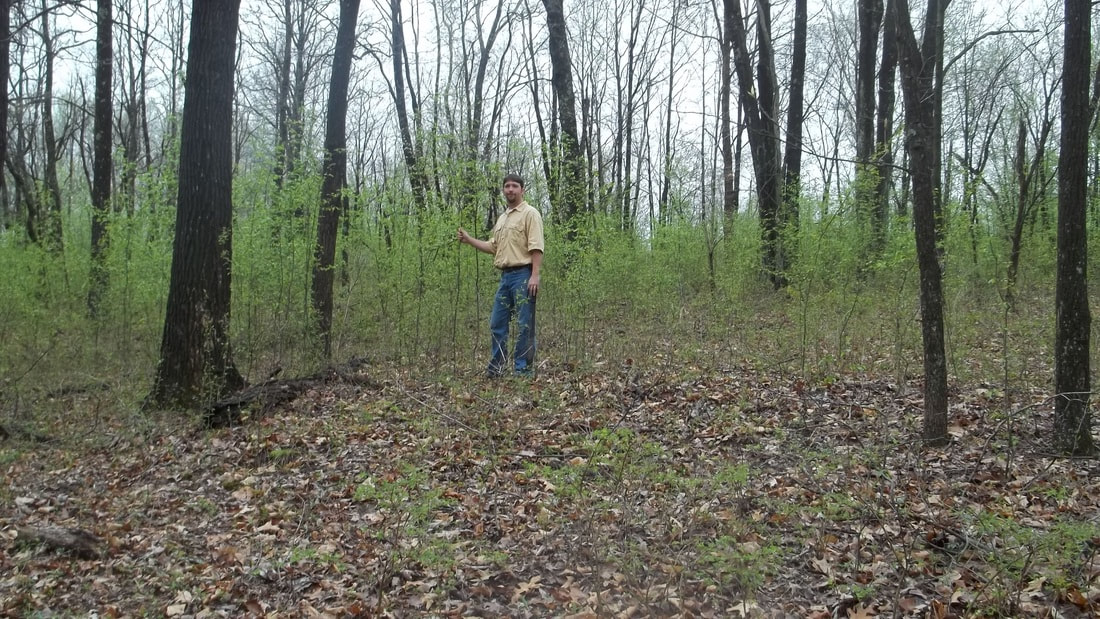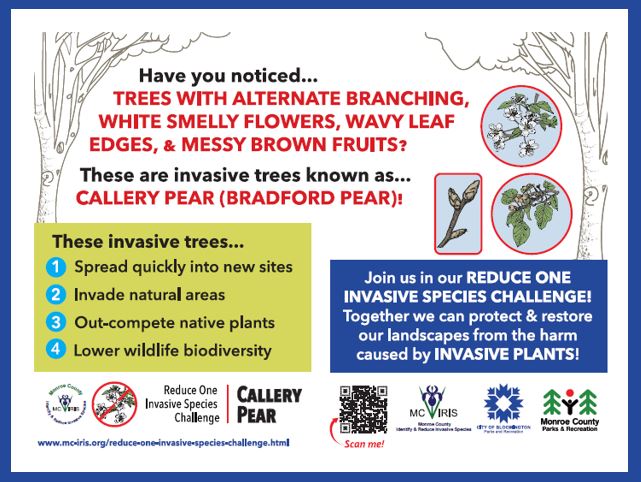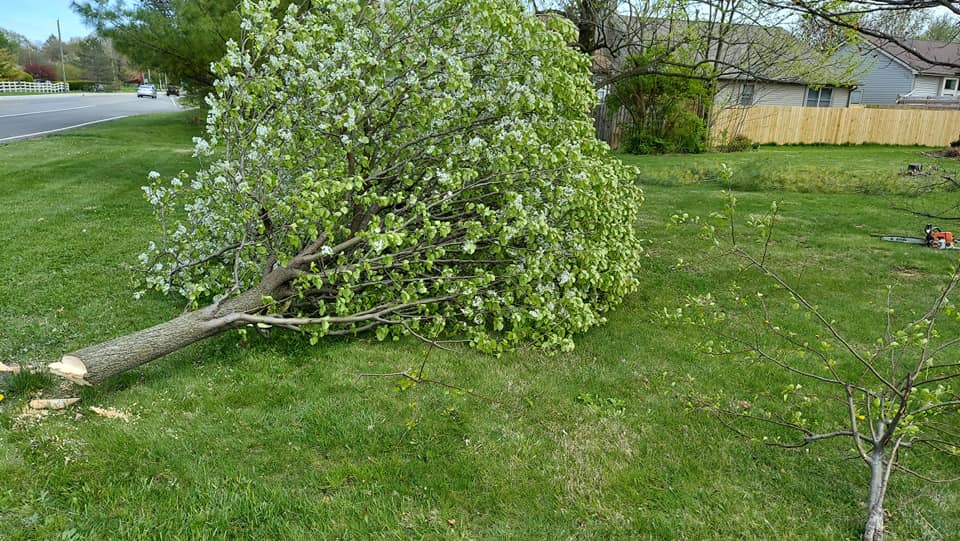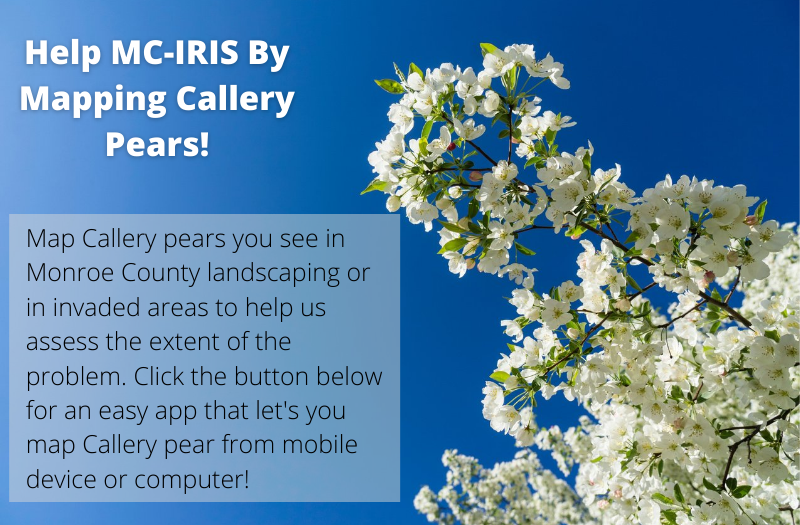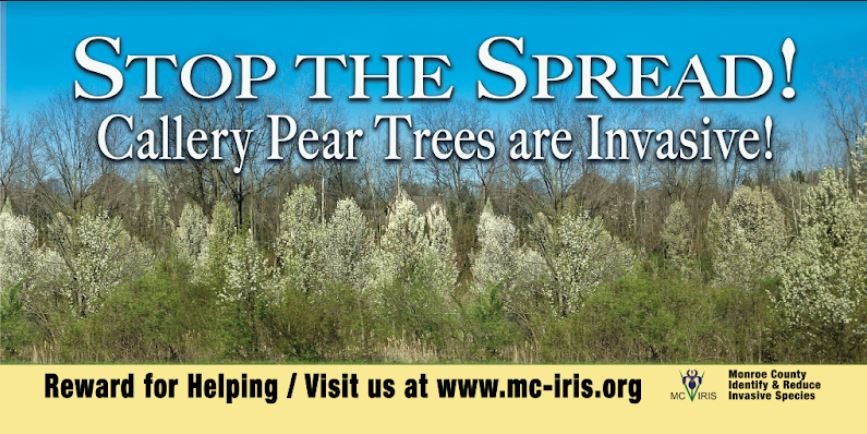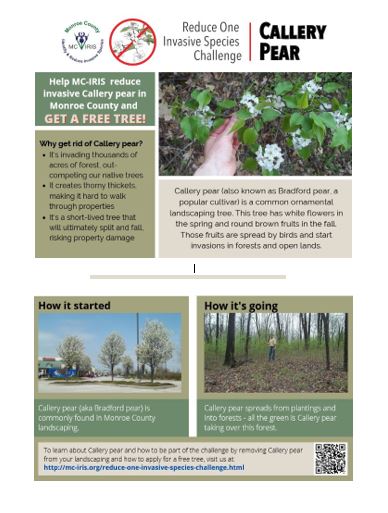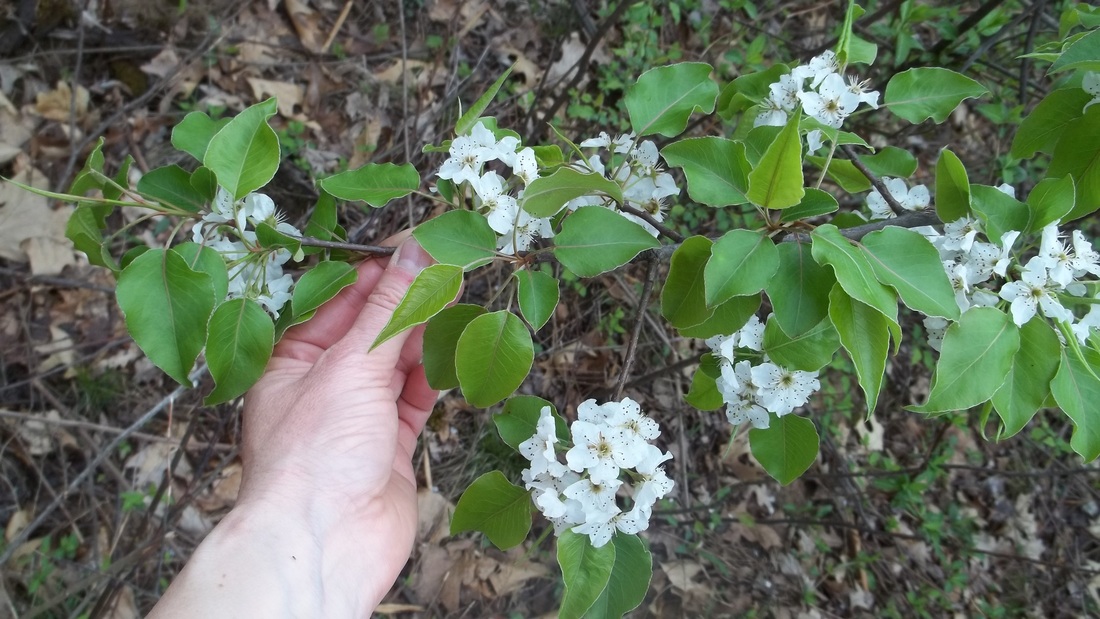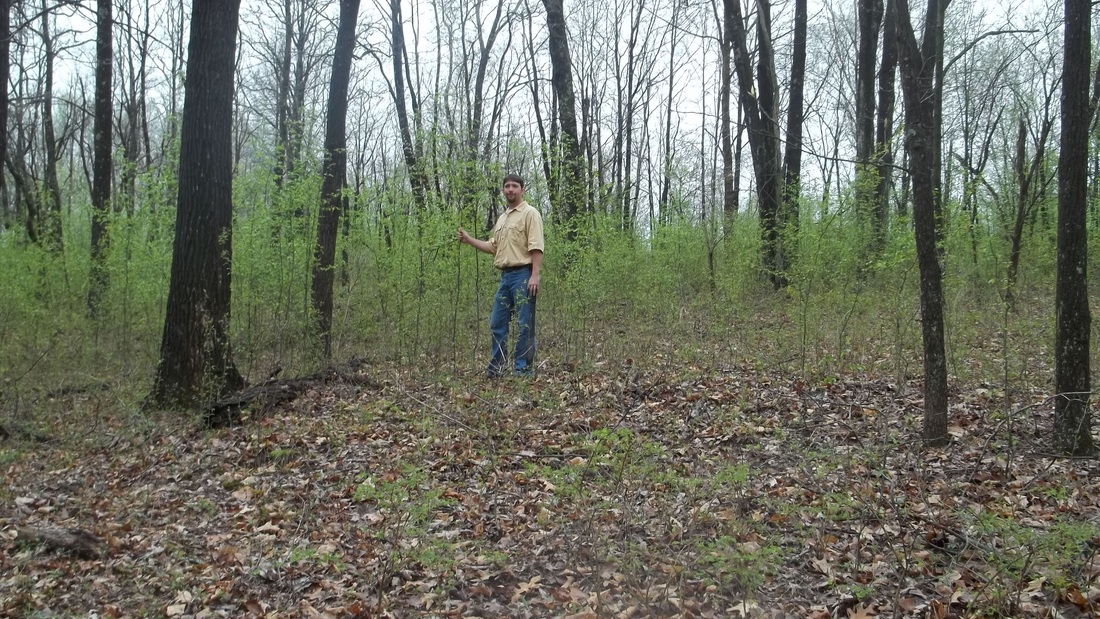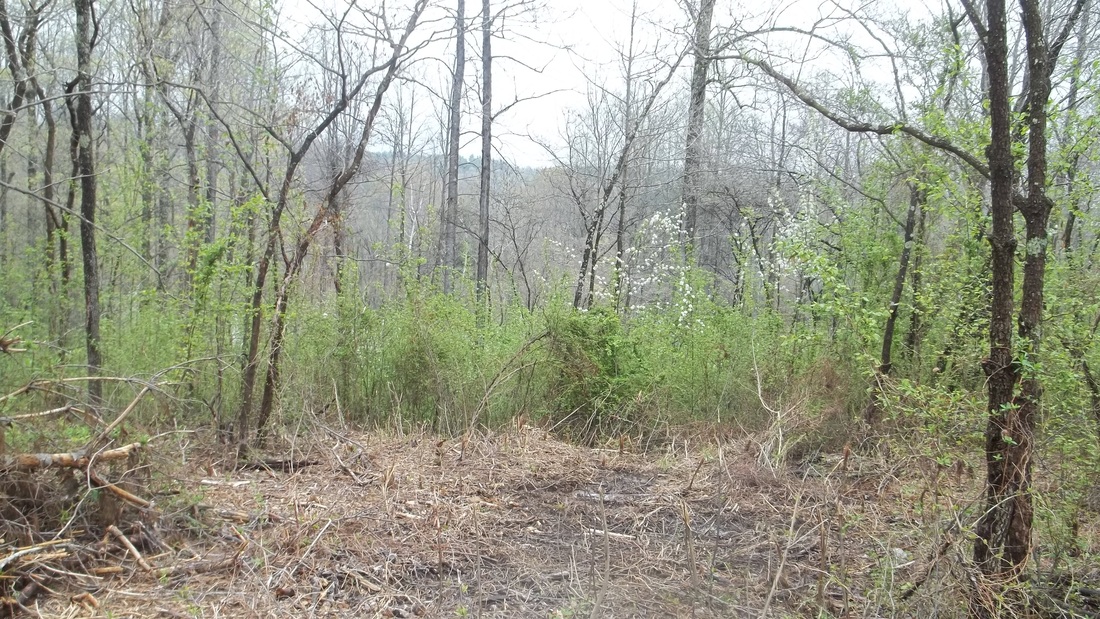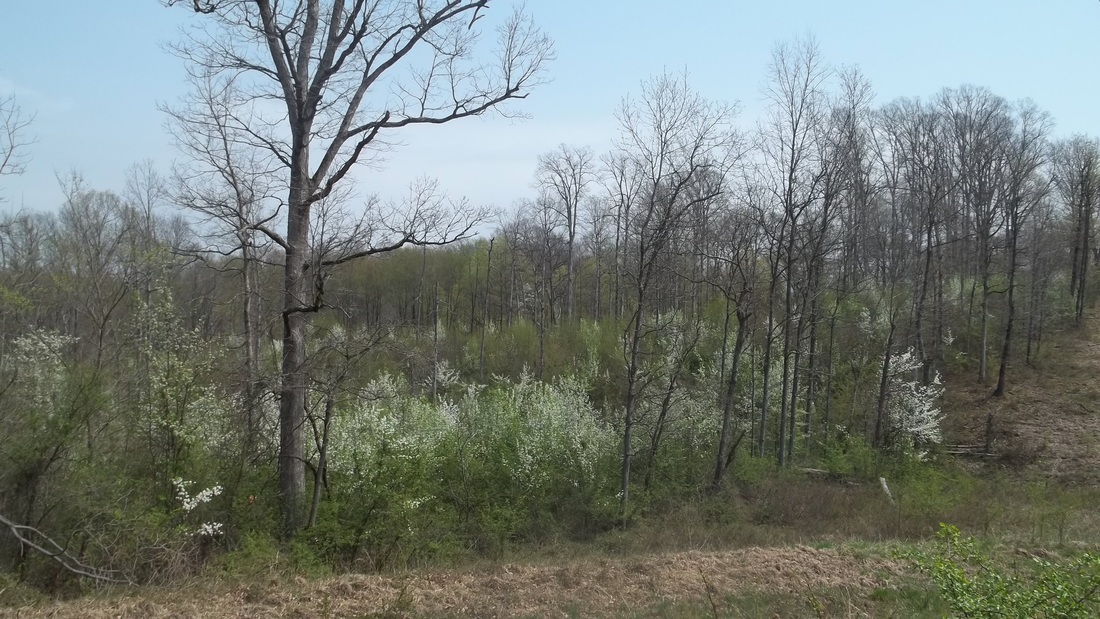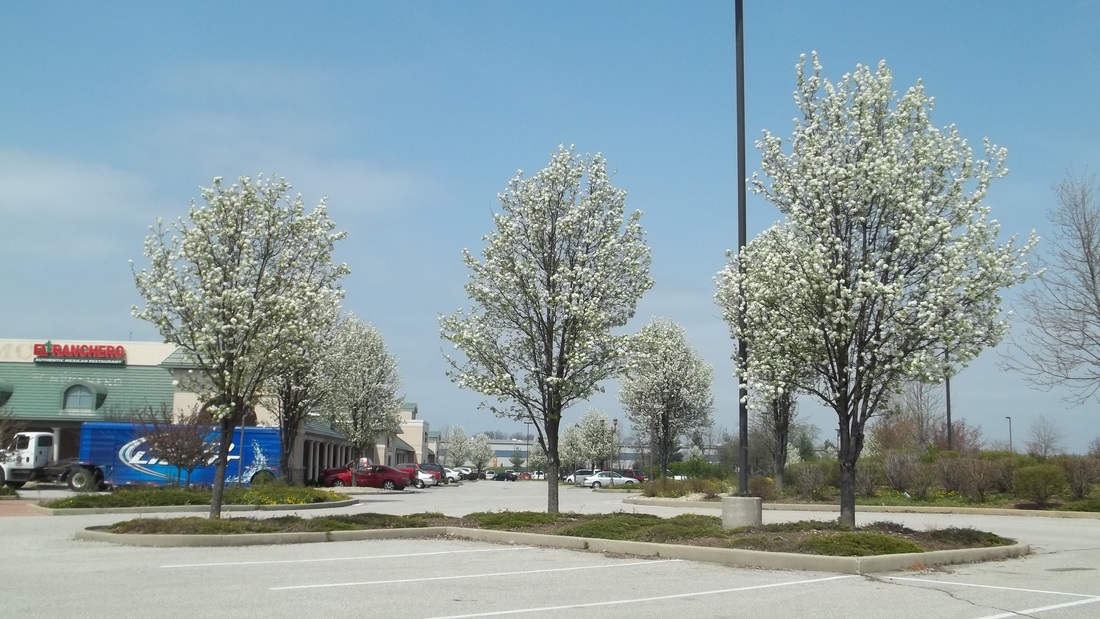Callery pear (Pyrus calleryana)
|
Why should you control Callery pear?
|
All the green in this forest understory is Callery pear.
|
How do I identify Callery pear?
|
|
Is Callery pear the same thing as Bradford pear?
Callery pear is the parent species of Bradford pear, which is one cultivar of Callery pear. Other cultivars include Cleveland Select, Autumn Blaze, Aristocrat, Red Spire, Chanticleer, and many others. All cultivars of Callery pear are invasive - there are no exceptions. |
What can I do about this?
- Remove Callery pear in your landscaping by cutting it down, and then paint the stump with herbicide to stop sprouting (more information on control here). And then reward yourself by applying for a free native replacement tree!
- Have a neighbor or a business with Callery pear? Print out this flyer and give to them with encouragement to replace the tree -- for free!
- Map any Callery pears you see in Monroe County with this easy to use app.
- Join MC-IRIS on our work days to help remove Callery pear and other invasive species from Monroe County natural areas.
Discounts For Callery Pear Removal
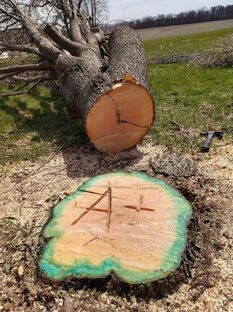
Thanks to local businesses who have stepped up to offer a discount on Callery pear removal! Please contact them to take advantage of their offers, and tell them MC-IRIS sent you! |
Bluestone Tree
[email protected] 812-824-3335 https://bluestonetree.com/ Discount offer: 1 tree- 15% discount 2-5 trees- 25% 6-10 trees- 30% 11-30 trees- 35% Over 30 trees- 40% Norman Arborcare Andrew Norman [email protected] 812-371-2142 https://www.facebook.com/normanarborcare/ Discount offer: We will offer $100.00 off the proposed bid for a removal of a Callery Pear. We also plant trees and shrubs, and would be happy to provide bids to those residents interested in having their 1-2" native replacement tree planted for them. |
What are the rules regarding planting Callery pear in Monroe County?
|
Outside Bloomington: .Callery pear cannot be used to meet the minimum standards required for site plan approval for landscaping new commercial sites or multi-family developments, or when street trees are required for subdivisions. You can only use species on the approved native plant list. Details can be found in Chapter 830, the Monroe County landscaping ordinance.
|
In Bloomington: Due to spreading infestations, Callery pear is no longer planted by the City of Bloomington, and it is disallowed in new developments by the City's Unified Development Ordinance. Erin Hatch, Urban Forester with the City of Bloomington, is the best person to contact to remove Callery pear located in sidewalk green strips and other right-of-way areas. These are considered city trees. Erin notes, “If adjacent property owners wish to conduct tree work, such as removal of these trees, at their own cost, they can submit a tree work permit application, found on the webpage for the City's Urban Forest.” If the tree is dead or dying, or poses a safety risk, the city will remove at their cost. Visit this page https://bloomington.in.gov/about/trees
TreeKeeper website is an online inventory of almost all of our street trees and some of our park trees in Bloomington. Visit this page https://bloomington.in.gov/about/trees |
More information on the struggle to ban Callery pear from sale in Indiana can be found here.
|
Ready to control this invasive tree? More details on Callery pear control methods can be found here. |
|
Billboard sponsored by MC-IRIS on N. Walnut in April-May
|
|
As documented in this April 2021 video by WTIU, reporter Emma Atkinson shows just how much Callery pear we have in Monroe County, and why it's a problem.
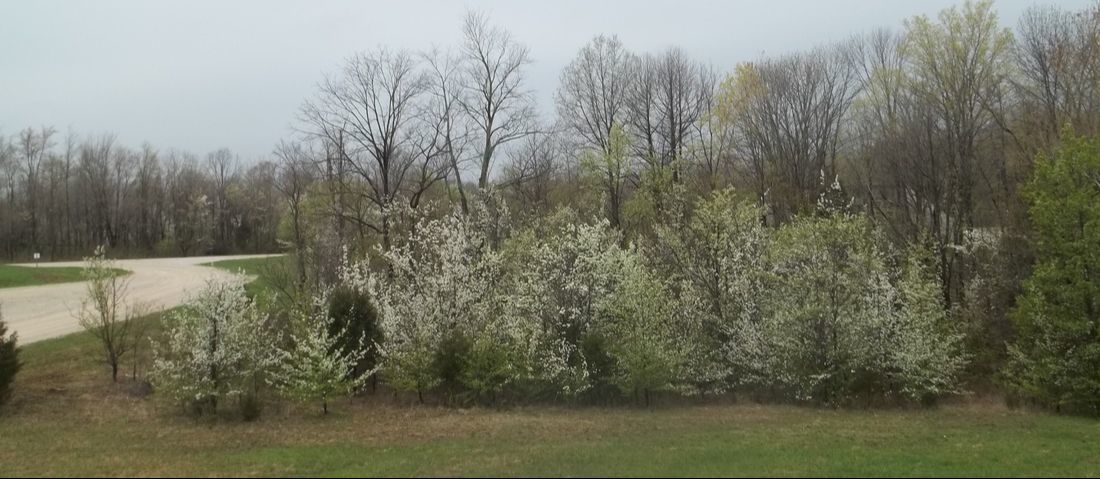 Callery pear along the edge of a forest in northern Martin County.
Callery pear along the edge of a forest in northern Martin County.
Callery Pear - A Bad, Bad Plant With Pretty Flowers
|
|
|
Please report Callery pear growing outside of cultivation.
|
Want more information on Callery pear, including how to control it?
|
What should I plant instead of Callery pear?
|
